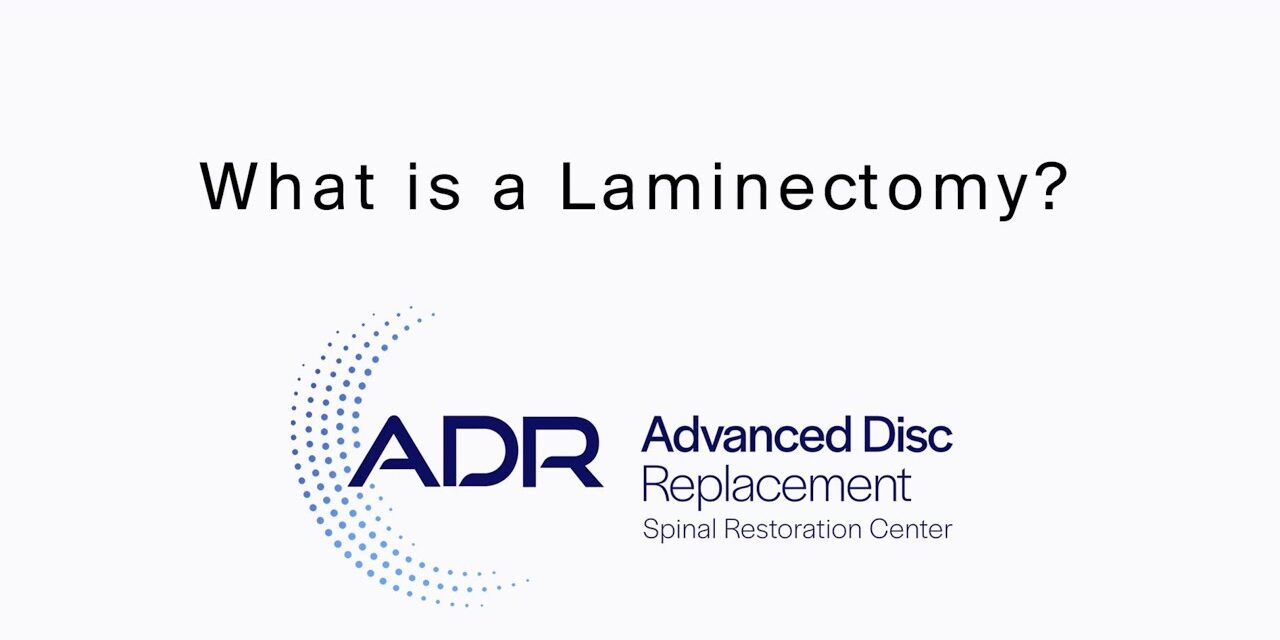

Cervical stenosis is an abnormal narrowing of the spinal canal in the neck that may cause neck, shoulder and/or arm pain, “pins and needles” sensation, and weakness or numbness.
This condition rarely resolves without surgery, but one approach to stopping the progression of cervical stenosis is posterior cervical laminectomy. Posterior cervical laminectomy is a spine surgery procedure in which the back of the spinal bone called the lamina is removed to increase the size of the spinal canal.

Who Should Get a
Posterior Cervical
Laminectomy?
Patients with cervical stenosis generally benefit from posterior cervical laminectomy. The cervical stenosis may be congenital (present at birth) or acquired (develops over time). Other indications for posterior cervical laminectomy include cervical spondylotic myelopathy, multilevel spondylotic radiculopathy, ossification of the posterior longitudinal ligament, ossification of the yellow ligament, infection, and cancer. Your spine surgeon can help you determine which treatment is right for you.
Posterior Cervical Laminectomy - Understanding the Procedure
Posterior cervical laminectomy is performed under general anesthesia over the course of 1-2 hours. The spine surgery is performed on the back of the neck (i.e., posterior), so you will lie face down on a special operating cushion. A sterile field is created with sterile drapes and the skin of the neck is sterilized.
Your spine surgeon will make an incision along the midline (i.e., down the center of the spine) that is a few inches long. The first critical step in posterior cervical laminectomy is to carefully move all structures to either side, primarily the muscles of the neck with their accompanying blood vessels and nerves. A portable X-ray machine or fluoroscope may be used to obtain images of the cervical (neck) spine immediately before any cutting of bone takes place. Once the correct spinal bone (or bones) is identified, the lamina is very carefully cut in two places and removed. Removing the lamina opens the spinal canal and removes the bony structures that were pressing on the spinal cord and nerve roots.
Your spine surgeon may choose to reinforce the cervical spine by placing screws, rods, and plates. If so, the entire procedure is called posterior cervical laminectomy and fusion (discussed in the next section).
The structures in the back of the neck are carefully returned to their original orientation, the skin is closed with sutures (stitches) or staples, and a dressing is applied. You will be moved to a post-anesthesia care unit until the general anesthesia wears off, then moved to a hospital room. Patients usually spend one to two days in the hospital after posterior cervical laminectomy with or without fusion.


Posterior Cervical
Laminectomy and Fusion
While the lamina is a small bit of bone, it performs several important functions. It covers and protects the back of the spinal cord, gives the spinal bone strength, and helps to determine the bend of the cervical spine itself. Some patients do not need a fusion with posterior cervical laminectomy, but it is often the best choice. As mentioned above, posterior cervical laminectomy with fusion is a spine surgery procedure in which the spinal bones are held together with metal hardware. Patients who tend to do better with posterior cervical laminectomy with (instrumentation) fusion are patients under the age of 70, relatively healthy (e.g., without cardiac disease, diabetes, clotting disorders, or COPD), have neck instability and severe neck pain, and have a relatively straight cervical spine (i.e. lordosis <10 degrees). Patients who have posterior cervical laminectomy without fusion usually must weak a neck brace for 6 to 12 weeks.
Posterior Cervical
Laminectomy vs
Laminoplasty
The term “-ectomy” indicates the removal of tissue, while “-plasty” indicates a structural revision. With these definitions in mind, it is easy to see laminectomy is the removal of the lamina (the back part of the spinal bone) and laminoplasty is a structural change in the lamina. In posterior cervical laminoplasty, the lamina is partially cut on one side, fully cut on the other, and the bone opened to allow more room in the spinal canal.
Recovering From Surgery
Regardless of whether your posterior cervical laminectomy also included an instrumentation fusion, you will need to wear a neck brace or collar for at least two weeks after surgery. This keeps your neck straight and in a neutral position. Starting while you are still in the hospital, you will start performing very light activities, such as walking. IV pain medications will help control the pain while you are in the hospital. Once you can eat a normal diet and take pills by mouth, you will be discharged home.
Your first follow-up appointment usually takes place two weeks after posterior cervical laminectomy. You will be quite limited in the types of things you can do between the surgery and the first follow-up appointment. Generally, patients cannot drive, lift anything greater than 5-10 pounds, or put the incision under water. At the first posterior cervical laminectomy follow-up appointment, your spine surgeon will assess your progress and may reduce activity restrictions. Keep in mind, however, complete recovery from posterior cervical laminectomy may take up to 12 weeks.
Life After Posterior Cervical Laminectomy - What to Expect
Posterior cervical laminectomy provides additional space for the spinal cord in the spinal canal. Once the lamina (or several laminae) is removed, the compression on the spinal cord should be relieved. This may relieve neck and shoulder pain, weakness or numbness, or other symptoms of cervical stenosis. Certainly, symptoms of cervical stenosis should not get any worse after posterior cervical laminectomy. Unfortunately, if the spinal cord or nerves were permanently damaged because of the cervical stenosis, then posterior cervical laminectomy will not fully relieve symptoms. However, cervical stenosis and other conditions treated with posterior cervical laminectomy tend to get worse with time, so this spine surgery can stop the damaging progression.
Ready to reclaim your life? Get in touch with Dr. Lanman Today.
FOLLOW US ON SOCIAL MEDIA | @ADRSPINE




